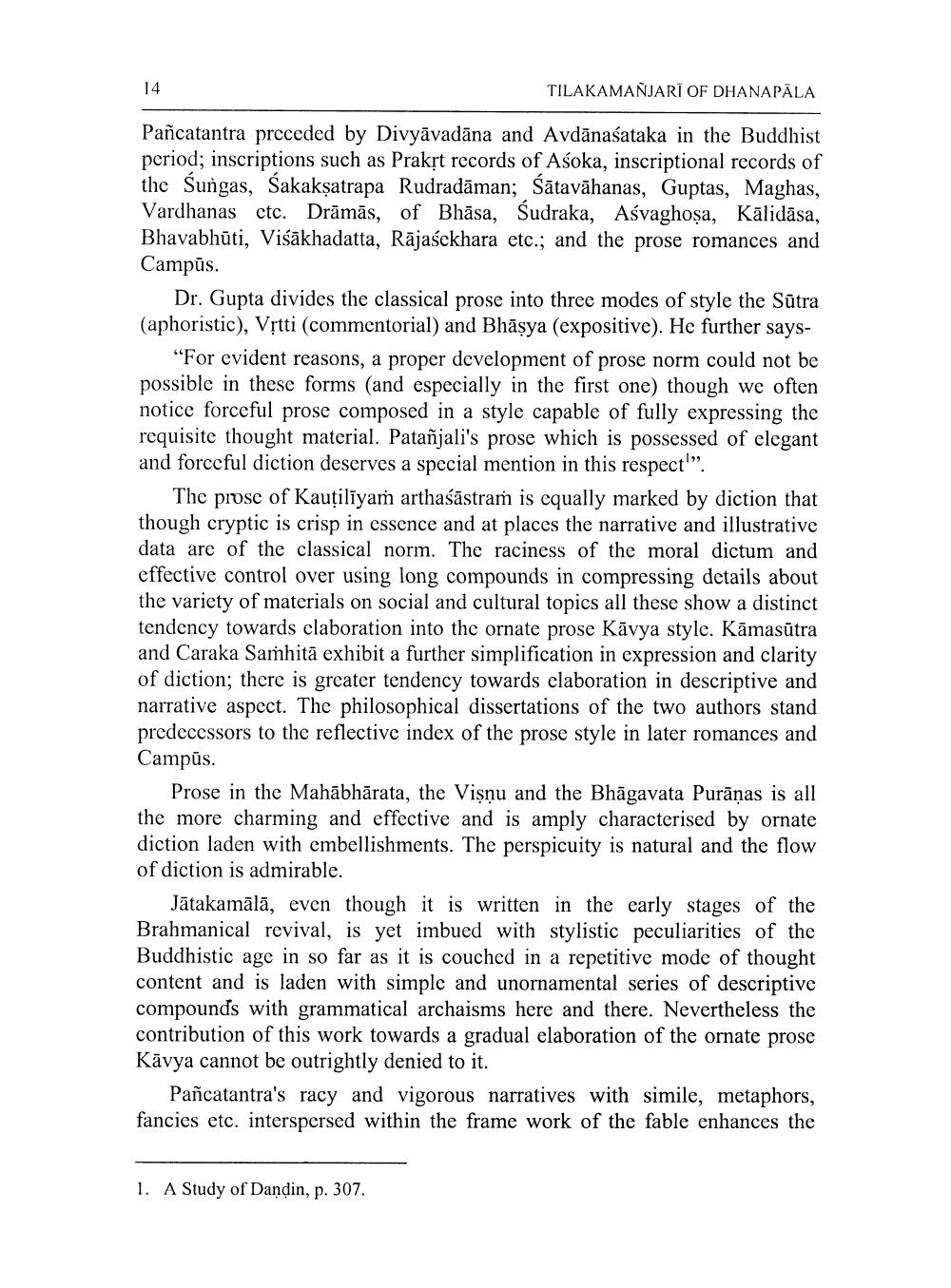________________
TILAKAMANJARĪ OF DHANAPALA
Pañcatantra preceded by Divyāvadāna and Avdānaśataka in the Buddhist period; inscriptions such as Prakrt records of Asoka, inscriptional records of the Sungas, Sakaksatrapa Rudradāman; Śātavāhanas, Guptas, Maghas, Vardhanas etc. Drāmās, of Bhāsa, Sudraka, Asvaghoșa, Kālidāsa, Bhavabhūti, Viśākhadatta, Rājasekhara etc.; and the prose romances and Campūs.
Dr. Gupta divides the classical prose into three modes of style the Sūtra (aphoristic), Vịtti (commentorial) and Bhāșya (expositive). He further says
“For evident reasons, a proper development of prose norm could not be possible in these forms (and especially in the first one) though we often notice forceful prose composed in a style capable of fully expressing the requisite thought material. Patañjali's prose which is possessed of elegant and forceful diction deserves a special mention in this respect!”.
The pidse of Kauțilīyam arthaśāstram is equally marked by diction that though cryptic is crisp in essence and at places the narrative and illustrative data are of the classical norm. The raciness of the moral dictum and effective control over using long compounds in compressing details about the variety of materials on social and cultural topics all these show a distinct tendency towards elaboration into the ornate prose Kāvya style. Kāmasūtra and Caraka Samhitā exhibit a further simplification in expression and clarity of diction; there is greater tendency towards elaboration in descriptive and narrative aspect. The philosophical dissertations of the two authors stand predecessors to the reflective index of the prose style in later romances and Campūs.
Prose in the Mahābhārata, the Vişnu and the Bhāgavata Purāņas is all the more charming and effective and is amply characterised by ornate diction laden with embellishments. The perspicuity is natural and the flow of diction is admirable.
Jātakamālā, even though it is written in the early stages of the Brahmanical revival, is yet imbued with stylistic peculiarities of the Buddhistic age in so far as it is couched in a repetitive mode of thought content and is laden with simple and unornamental series of descriptive compounds with grammatical archaisms here and there. Nevertheless the contribution of this work towards a gradual elaboration of the ornate prose Kävya cannot be outrightly denied to it.
Pañcatantra's racy and vigorous narratives with simile, metaphors, fancies etc. interspersed within the frame work of the fable enhances the
1. A Study of Dandin, p. 307.




